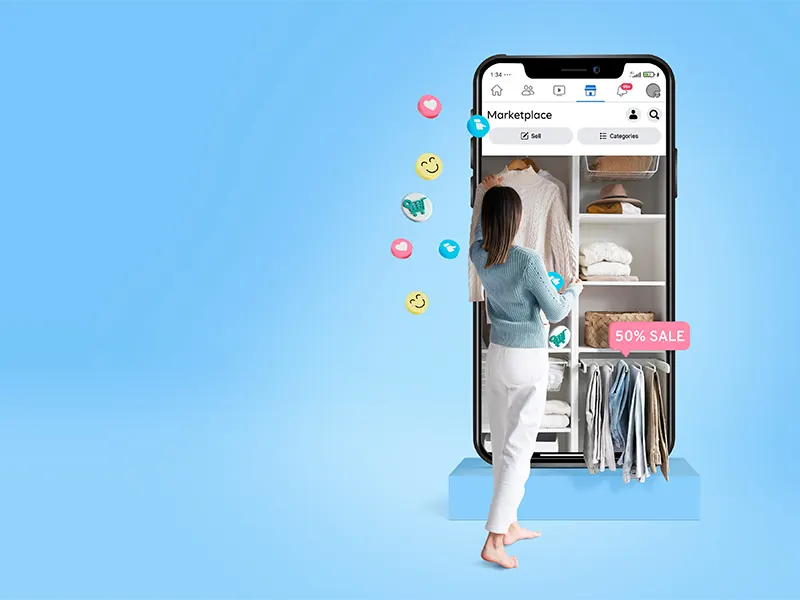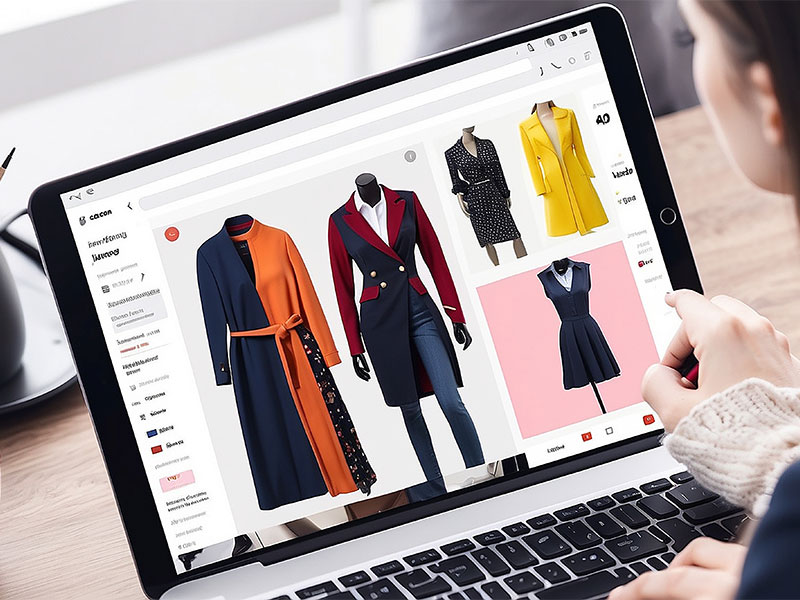
Let’s be honest—your fashion brand deserves more than a cookie-cutter online store that looks like every other Shopify template. In an industry where visual appeal is everything, your eCommerce website needs to be as stunning as the pieces you’re selling. But here’s the thing: a beautiful website that doesn’t convert is just an expensive digital brochure. You need something that’s both visually jaw-dropping and strategically designed to turn visitors into paying customers. That’s exactly what these tips to create a stunning fashion eCommerce website will help you achieve.
Whether you’re launching your first online store or redesigning an existing one, this guide breaks down everything from visual design to technical performance and user experience to conversion optimization. Let’s build something that makes your competitors jealous and your customers obsessed.
Why Your Fashion Website Needs to Be Exceptional?
The fashion eCommerce space is brutally competitive. Your potential customers are literally one click away from Zara, ASOS, or any of the thousands of online boutiques competing for their attention and dollars.
Your website is often the first—and sometimes only—interaction someone has with your brand. If it loads slowly, looks outdated, or feels clunky to navigate, they’re gone. Research shows you have about 3 seconds to make a first impression online. In fashion, where aesthetics are everything, that impression had better be stunning.
But “stunning” doesn’t mean complicated or flashy. The best tips to create a stunning fashion ecommerce website balance beauty with functionality, creating experiences that are both visually captivating and effortlessly easy to use.
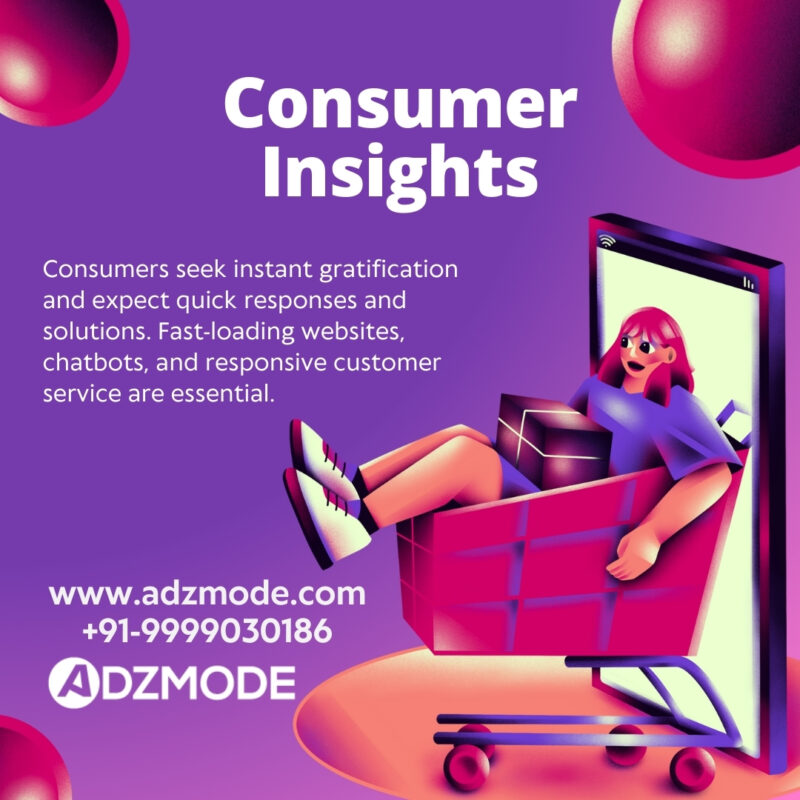
Start with Crystal-Clear Brand Identity
Before touching any design software or website builder, get crystal clear on your brand identity. Your website should be an extension of your brand personality, not a generic template.
Ask yourself:
- What emotions should your brand evoke? (Luxury? Playfulness? Edginess? Sustainability?)
- Who is your target customer, and what aesthetic resonates with them?
- What makes your brand different from competitors?
- What three words best describe your brand personality?
These answers inform everything—color schemes, typography, layout style, imagery, copy tone, and overall vibe. A streetwear brand and a luxury evening wear label need completely different website approaches, even if they’re both selling clothes.
Create a mood board before designing anything. Collect screenshots of websites, color palettes, fonts, and imagery that capture your brand essence. This becomes your north star throughout the design process.
Prioritize Mobile-First Design
Here’s a stat that should shape your entire approach: Over 70% of fashion eCommerce traffic comes from mobile devices. If your website isn’t optimized for smartphones, you’re essentially turning away the majority of potential customers.
Mobile-first design means designing for phone screens first, then adapting for desktop—not the other way around. Key mobile considerations include:
- Touch-friendly buttons: Make CTAs and navigation elements large enough to tap easily (minimum 44×44 pixels).
- Simplified navigation: Mobile menus need to be intuitive. Hamburger menus work, but ensure categories are clearly organized.
- Fast loading: Mobile users are even less patient than desktop users. Compress images ruthlessly.
- Thumb-friendly layout: Place important elements where thumbs naturally reach—the center and bottom of the screen.
- Vertical scrolling: Design for natural scrolling behavior rather than forcing horizontal navigation.
- Mobile checkout optimization: Fewer form fields, autofill support, mobile payment options (Apple Pay, Google Pay).
Test your website on actual phones—multiple models and operating systems—not just resizing your desktop browser. The experience is different, and you need to see what customers actually see.
2. Master the Art of Product Photography
In physical stores, customers can touch fabric, see true colors, and try things on. Online, your product photography is doing all that heavy lifting. This is non-negotiable: invest in professional product photography.
Essential shots for each product:
- Front and back views: Full garment display on model or mannequin
- Detail shots: Close-ups of fabric texture, stitching, buttons, zippers
- Lifestyle images: Products styled in real-world contexts
- Size reference: Model wearing the piece with size/measurements listed
- Color accuracy: Multiple angles showing true color in different lighting
- 360-degree views: Interactive spins (if budget allows)
Photography tips to implement:
- Use consistent lighting and backgrounds across your catalog
- Show products on diverse body types when possible
- Include styling suggestions (complete-the-look shots)
- Ensure colors on screen match actual products
- Optimize images for the web without sacrificing quality
- Use white or neutral backgrounds for product-focused shots
- Include lifestyle shots that tell your brand story
Poor photography is the fastest way to lose sales. Customers can’t buy what they can’t properly see or visualize themselves wearing.
digital marketing for every boutique
3. Create Intuitive Navigation and Site Architecture
Fashion websites can get complicated quickly—multiple categories, subcategories, filters, and hundreds or thousands of products. Your navigation needs to help customers find what they want fast, or they’ll leave frustrated.
Best practices for fashion site navigation:
- Clear main categories: Women’s, Men’s, Accessories, Sale—keep it simple at the top level
- Dropdown menus with visuals: Include thumbnail images in mega menus to make browsing more engaging
- Smart filtering: Allow filtering by size, color, price, style, occasion, and new arrivals
- Search functionality: Robust search with autocomplete and suggested products
- Breadcrumbs: Show users where they are in your site hierarchy
- Quick view options: Let users see product details without leaving collection pages
- Recently viewed: Help users return to products they browsed
One of the most important tips to create a stunning fashion ecommerce website is making navigation so intuitive that customers don’t have to think about it. If they’re confused about where to find something, you’ve already lost them.
4. Design Product Pages That Convert
Your product pages are where browsers become buyers—or bounce. Every element needs to work together to build desire and remove purchase friction.
Essential elements for high-converting product pages:
- Clear product title and price: No guessing games
- High-quality image gallery: Multiple angles and views
- Detailed descriptions: Fabric composition, care instructions, fit details
- Size guide: Comprehensive sizing chart with measurements
- Stock availability: Real-time inventory updates
- Customer reviews: Social proof is gold (we’ll cover this more later)
- Size recommendations: “True to size” or “runs small” guidance
- Styling suggestions: “Complete the look” or “You might also like”
- Clear CTA buttons: “Add to Bag” should be impossible to miss
- Wishlist option: Let users save items for later
- Share buttons: Enable social sharing
- Return policy: Easy-to-find information reduces purchase anxiety
Layout matters too. F-pattern layouts work well—images on the left and product info on the right, with key information (price, sizes, CTA) above the fold. Mobile layouts should stack vertically with images first.
Building a fashion eCommerce website that truly converts requires more than just good design—it needs strategic technical architecture, seamless integrations, and ongoing optimization. Partnering with an experienced web development company in India gives fashion brands access to skilled developers who understand both eCommerce platforms and fashion industry requirements at competitive rates. These specialized teams can build custom functionality, optimize site performance, integrate with inventory systems, and create scalable solutions that grow with your brand. The technical foundation they provide ensures your stunning design actually works flawlessly for customers worldwide.
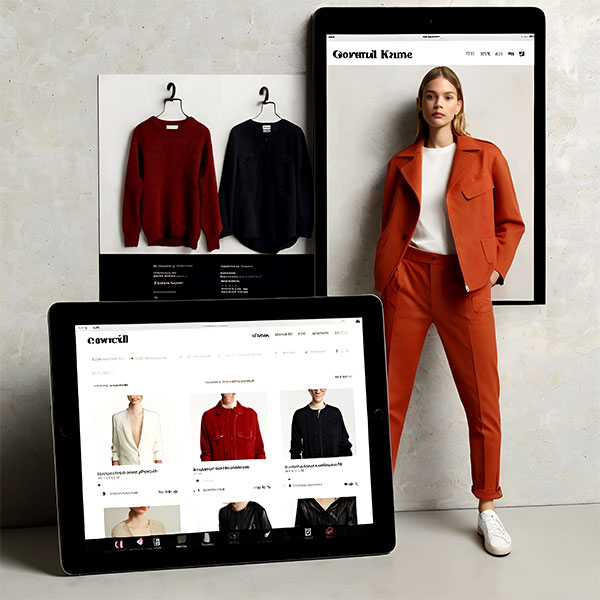
5. Optimize Site Speed and Performance
Here’s a hard truth: a one-second delay in page load time can reduce conversions by 7%. In fashion eCommerce where attention spans are short, slow websites kill sales.
Speed optimization strategies:
- Compress images: Use WebP format or compress JPEGs/PNGs without noticeable quality loss
- Lazy loading: Load images only as users scroll to them
- Content delivery network (CDN): Serve content from servers closest to users geographically
- Minify code: Compress CSS, JavaScript, and HTML files
- Browser caching: Store static resources so returning visitors load faster
- Reduce redirects: Every redirect adds load time
- Optimize plugins: Remove unnecessary apps/plugins that slow your site
- Choose quality hosting: Don’t cheap out on hosting—it affects everything
Use tools like Google PageSpeed Insights, GTmetrix, or Pingdom to test your site speed and identify specific issues. Aim for load times under 3 seconds on both desktop and mobile.
tips for ecommerce website development
6. Implement Strategic Call-to-Actions
CTAs guide users through your site toward conversion. In fashion eCommerce, you need multiple CTAs at various stages of the buying journey.
Types of CTAs for fashion websites:
- Primary CTAs: “Shop Now,” “Add to Bag,” “Checkout”
- Secondary CTAs: “View Details,” “Size Guide,” “Wishlist”
- Email capture: “Get 10% Off Your First Order”
- Social proof: “See What Customers Are Wearing”
- Content engagement: “Read Styling Tips,” “View Lookbook”
CTA best practices:
- Use action-oriented language
- Create visual contrast (color, size, spacing)
- Make them large enough to click easily on mobile
- Place them strategically (above fold, after key information)
- Use urgency when appropriate (“Limited Stock,” “Sale Ends Soon”)
- A/B test different copy, colors, and placements
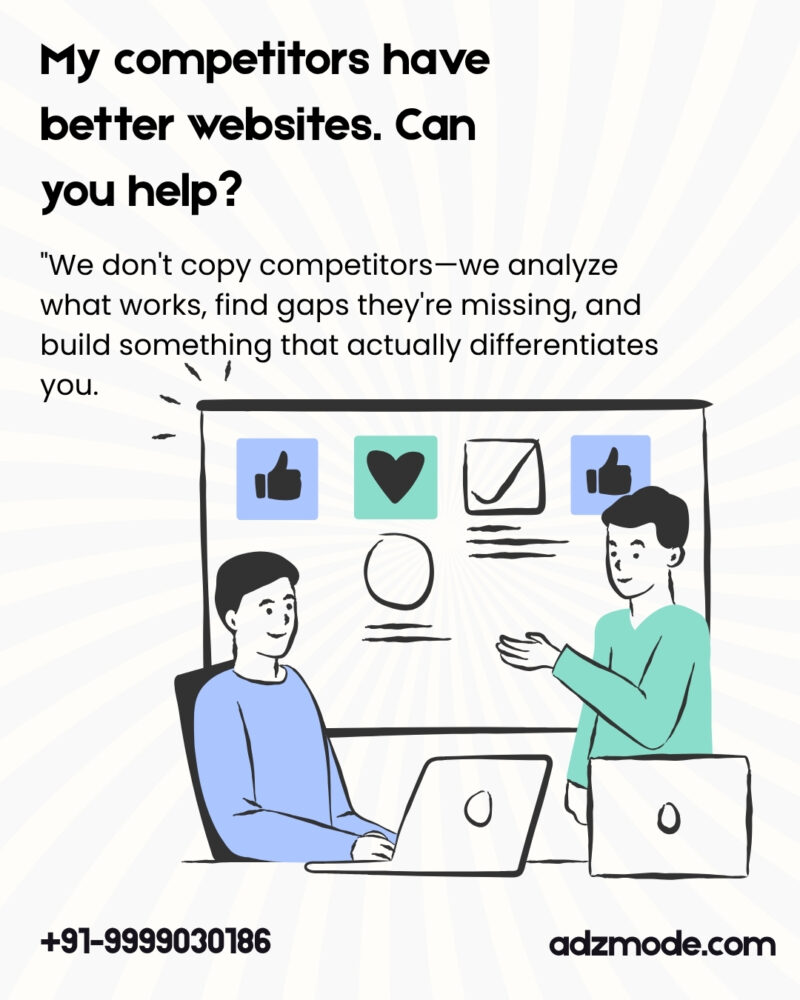
7. Build Trust with Social Proof
Fashion purchases are emotional and sometimes risky—will it fit? Will it look good? Is the quality worth it? Social proof alleviates these concerns by showing others had positive experiences.
Ways to incorporate social proof:
- Customer reviews and ratings: Display prominently on product pages
- Photo reviews: Encourage customers to upload photos wearing your products
- User-generated content: Feature customer Instagram posts on your site
- Testimonials: Showcase positive feedback on homepage and category pages
- Press mentions: “As Featured In” sections with media logos
- Trust badges: Security certifications, payment icons, return guarantees
- Real-time notifications: “Someone in New York just purchased this item”
Don’t hide negative reviews—authenticity builds trust. A mix of 4-5 star reviews with some constructive criticism is more believable than perfect 5-star ratings across the board.
8. Create Compelling Content Beyond Products
The best fashion eCommerce sites aren’t just storefronts—they’re destinations that provide value through content. This builds brand loyalty and improves SEO.
Content ideas for fashion sites:
- Style guides: “How to Dress for Your Body Type,” “5 Ways to Wear a Blazer”
- Trend reports: Coverage of current and upcoming fashion trends
- Brand story: Behind-the-scenes content about your design process
- Lookbooks: Seasonal collections styled in aspirational settings
- Blog posts: Fashion tips, sustainability topics, brand partnerships
- Video content: Styling tutorials, try-on hauls, designer interviews
- Size and fit guides: Detailed information helping customers choose correctly
This content serves multiple purposes—it engages customers, improves search rankings, provides social media material, and establishes your brand as more than just another online store.

9. Streamline the Checkout Process
You got them to add items to the cart—don’t lose them now. Cart abandonment rates in fashion eCommerce hover around 70%, often due to complicated checkout processes.
Checkout optimization tips:
- Guest checkout option: Don’t force account creation to purchase
- Progress indicators: Show how many steps remain
- Multiple payment options: Credit cards, PayPal, Apple Pay, Google Pay, Afterpay
- Address autocomplete: Make form filling faster
- Saved information: For returning customers with accounts
- Clear shipping costs: No surprises at the final step
- Security reassurance: Display SSL certificates and security badges
- Exit-intent popups: Offer a discount or free shipping to abandoners
- Cart persistence: Save carts across devices and sessions
- One-page checkout: If possible, consolidate into a single page
Test your checkout flow regularly. Every unnecessary field or confusing step costs you sales.
The most successful fashion eCommerce sites integrate their online stores with powerful social media strategies to drive traffic and build communities. Collaborating with the best social media marketing agency helps fashion brands create cohesive campaigns that showcase products across Instagram, TikTok, Pinterest, and Facebook while driving targeted traffic to your website. Expert agencies understand fashion consumer behavior, influencer partnerships, content creation, and paid social advertising that converts followers into customers. This integrated approach ensures your stunning website gets the visibility it deserves while building lasting brand loyalty.
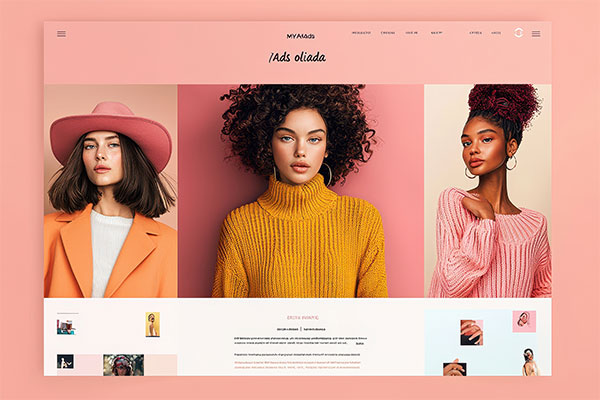
10. Implement Smart Search and Filtering
When customers know what they want, search becomes their primary tool. When they’re browsing, filters help them discover. Both need to be excellent.
Search functionality must-haves:
- Autocomplete suggestions: Predict what users are typing
- Typo tolerance: Understand “blu dres” means “blue dress”
- Synonym recognition: “pants” should also show “trousers”
- Visual search: Allow users to upload images to find similar items
- Search suggestions: “Did you mean…” for misspellings
- Popular searches: Display trending search terms
Filtering options for fashion:
- Category (tops, dresses, shoes, etc.)
- Size (with size range filtering)
- Color (visual color swatches, not just text)
- Price range (slider or predefined ranges)
- Brand (if you carry multiple brands)
- Style (casual, formal, bohemian, etc.)
- Occasion (work, wedding, weekend)
- New arrivals / Sale items
- Sustainable / Eco-friendly options
Make filters easy to apply and remove. Show result counts as filters are selected so users know what to expect.
11. Personalize the Shopping Experience
Personalization increases conversion rates by creating more relevant experiences for each visitor. Modern eCommerce platforms make this increasingly accessible.
Personalization strategies:
- Product recommendations: “You might also like” based on browsing history
- Recently viewed items: Help users return to products they considered
- Location-based content: Show relevant shipping info and currency
- Email personalization: Send targeted campaigns based on purchase history
- Abandoned cart emails: Remind users about items left in cart
- Birthday offers: Special discounts for subscribers
- VIP programs: Exclusive access for loyal customers
- Dynamic homepage: Show different content based on user behavior
Even basic personalization—like showing users products in categories they’ve browsed—significantly improves engagement and conversion rates.
12. Don’t Forget About SEO
A stunning website that nobody finds is pointless. Search engine optimization brings organic traffic—people actively looking for products like yours.
Fashion eCommerce SEO essentials:
- Keyword research: Identify what potential customers search for
- Optimized product titles: Include brand, product type, key features
- Detailed descriptions: Unique content for each product (no manufacturer descriptions)
- Alt text for images: Describe images for search engines and accessibility
- Category page optimization: Target broader keywords with category content
- Blog content: Rank for fashion-related search terms
- Technical SEO: Clean URL structure, XML sitemaps, schema markup
- Site speed: Search engines favor fast-loading sites
- Mobile optimization: Mobile-friendliness affects rankings
- Internal linking: Connect related products and content
SEO is a long-term strategy, but it’s one of the most cost-effective ways to drive traffic to your fashion eCommerce website.
13. Integrate Email Capture and Marketing
Email remains one of the highest-ROI marketing channels for eCommerce. Build your list and nurture it.
Email capture strategies:
- Welcome popup: Offer 10-15% discount for first-time subscribers
- Exit-intent popup: Catch people about to leave
- Footer signup: Persistent option on every page
- Checkout signup: Opt-in during purchase
- Content gating: Offer style guide in exchange for email
Email marketing tactics for fashion brands:
- Welcome series for new subscribers
- New arrival announcements
- Exclusive sale access for subscribers
- Abandoned cart recovery
- Post-purchase follow-ups and reviews requests
- Styling tips and content
- Birthday and anniversary offers
- Re-engagement campaigns for inactive subscribers
Build segments based on purchase history, browsing behavior, and engagement levels for more targeted campaigns.
14. Make Your Website Accessible
Accessibility isn’t just ethical—it’s good business. Making your site usable for people with disabilities expands your potential customer base.
Accessibility considerations:
- Color contrast: Ensure text is readable against backgrounds
- Alt text: Describe all images for screen readers
- Keyboard navigation: Site should work without a mouse
- Clear labeling: Buttons and links clearly indicate their purpose
- Text size: Readable font sizes with ability to zoom
- Video captions: Include captions for video content
- Form labels: Clear labels for all input fields
- Use tools like WAVE or Lighthouse to audit accessibility and identify improvements needed.
15. Plan for Scalability and Growth
Your fashion brand (hopefully) won’t stay small forever. Build a website that can grow with you.
Scalability considerations:
- Platform choice: Choose eCommerce platforms that handle growth (Shopify Plus, WooCommerce, BigCommerce)
- Hosting capacity: Ensure hosting can handle traffic spikes (launches, sales)
- Inventory management: Integrate systems that scale
- International expansion: Multi-currency and language support
- Team access: Multiple admin accounts with different permission levels
- API integrations: Connect with accounting, CRM, email marketing tools
Building with growth in mind saves you from expensive rebuilds later as your brand expands.
The Bottom Line on Creating a Stunning Fashion eCommerce Website
The best tips to create a stunning fashion eCommerce website are to balance aesthetics with strategy, beauty with functionality, and brand expression with user experience. Your website should be:
- Visually stunning and on-brand
- Lightning-fast on all devices
- Effortlessly easy to navigate
- Optimized for mobile shoppers
- Rich with high-quality imagery
- Strategically designed for conversions
- Built on solid technical foundations
- Continuously optimized based on data
This isn’t a one-time project—it’s an ongoing process of testing, learning, and improving. The fashion brands winning online treat their websites as living, evolving platforms that get better over time.
Start with these fundamentals, measure everything, listen to customer feedback, and continuously refine. Your stunning fashion eCommerce website isn’t just possible—it’s within reach. Now go build something that makes your brand impossible to ignore.
Frequently Asked Questions (FAQs)
Q. What platform is best for a fashion eCommerce website?
Shopify is the most popular choice for fashion eCommerce due to its ease of use, beautiful themes, and robust app ecosystem. WooCommerce (WordPress) offers more customization for those with technical resources. BigCommerce provides excellent built-in features without apps. For luxury brands, custom-built solutions on platforms like Magento offer maximum control. The best tips to create a stunning fashion ecommerce website start with choosing a platform that matches your technical abilities, budget, and growth plans.
Q. How much does it cost to build a fashion eCommerce website?
Costs vary dramatically based on complexity. DIY using Shopify templates: $500-3,000, including theme, apps, and initial setup. Semi-custom design with hired help: $5,000-15,000. Fully custom-built with unique functionality: $20,000-100,000+. Ongoing costs include hosting ($29-300/month), apps/plugins ($50-500/month), and maintenance. Following the tips to create a stunning fashion ecommerce website doesn’t require the highest budget—strategic design and smart platform choices deliver results at any price point.
Q. How important is site speed for fashion eCommerce?
Site speed is critical—a one-second delay reduces conversions by 7%, and 53% of mobile users abandon sites that take over 3 seconds to load. Fashion sites with high-quality images face particular speed challenges. Compress images, use CDNs, optimize code, and choose quality hosting. Google also uses speed as a ranking factor, affecting your SEO. Among all tips to create a stunning fashion ecommerce website, speed optimization delivers some of the highest ROI.
Q. Should I include video content on my fashion website?
Yes, video content significantly improves engagement and conversion. Product videos showing garments in motion, styling tutorials, behind-the-scenes brand content, and customer testimonials all perform well. Keep videos under 2 minutes, optimize for fast loading, and include captions for accessibility. Video increases time on site, provides social media content, and helps customers better visualize products. It’s one of the most effective tips to create a stunning fashion ecommerce website that stands out.
Q. How do I handle product returns on my fashion website?
Make your return policy clear, easy to find, and customer-friendly. Include details on your homepage footer, product pages, and checkout. Consider offering free returns (costs are offset by increased conversions) or at least reasonable return windows (30-60 days). Provide prepaid return labels, simple return processes, and quick refunds. Clear, generous return policies reduce purchase anxiety and increase conversion rates—essential when following tips to create a stunning fashion eCommerce website that converts.
Q. What payment methods should I offer?
Offer multiple payment options to reduce checkout abandonment: major credit cards (Visa, Mastercard, Amex), PayPal, Apple Pay, Google Pay, and buy-now-pay-later services (Afterpay, Klarna, Affirm). International brands should support local payment methods (Alipay for China, iDEAL for the Netherlands). The more payment flexibility you provide, the fewer customers you lose at checkout. This is one of the most practical tips to create a stunning fashion eCommerce website that maximizes conversions.
Q. How can I reduce cart abandonment on my fashion site?
Reduce abandonment by simplifying checkout (fewer steps, guest checkout option), showing shipping costs early, offering multiple payment methods, sending abandoned cart emails, implementing exit-intent popups with offers, displaying security badges, providing live chat support, and optimizing for mobile. Cart abandonment averaging 70% in fashion eCommerce means small improvements yield significant revenue increases. These tips to create a stunning fashion ecommerce website directly impact your bottom line.
Q. Do I need a blog on my fashion eCommerce site?
While not mandatory, a blog significantly benefits fashion eCommerce sites by improving SEO (ranking for keywords beyond product names), providing social media content, establishing brand authority, engaging customers beyond transactions, and giving email newsletter content. Post styling tips, trend reports, brand stories, and fashion guides. Aim for 2-4 posts monthly with quality over quantity. Content marketing is among the most valuable long-term tips to create a stunning fashion eCommerce website.
Q. How do I make my fashion website stand out from competitors?
Differentiate through unique brand personality and voice, exceptional product photography, valuable content beyond products, outstanding customer service, user-generated content showcasing real customers, sustainable or ethical practices, personalized shopping experiences, exclusive products or collaborations, and community-building efforts. Following generic tips to create a stunning fashion eCommerce website isn’t enough—inject your brand’s unique perspective and values into every element to create memorable experiences that build loyalty.
Q. Should I hire professionals or DIY my fashion website?
This depends on your budget, timeline, and technical skills. DIY works for small brands with limited budgets and technical confidence using platforms like Shopify. Hiring professionals makes sense when you need custom functionality, have a budget for quality design, lack time to learn technical aspects, or want to launch quickly with polish. Many brands start DIY and upgrade later. The most important tips to create a stunning fashion ecommerce website can be implemented either way with proper planning and attention to detail.
Share Your Project Requirements With Us



